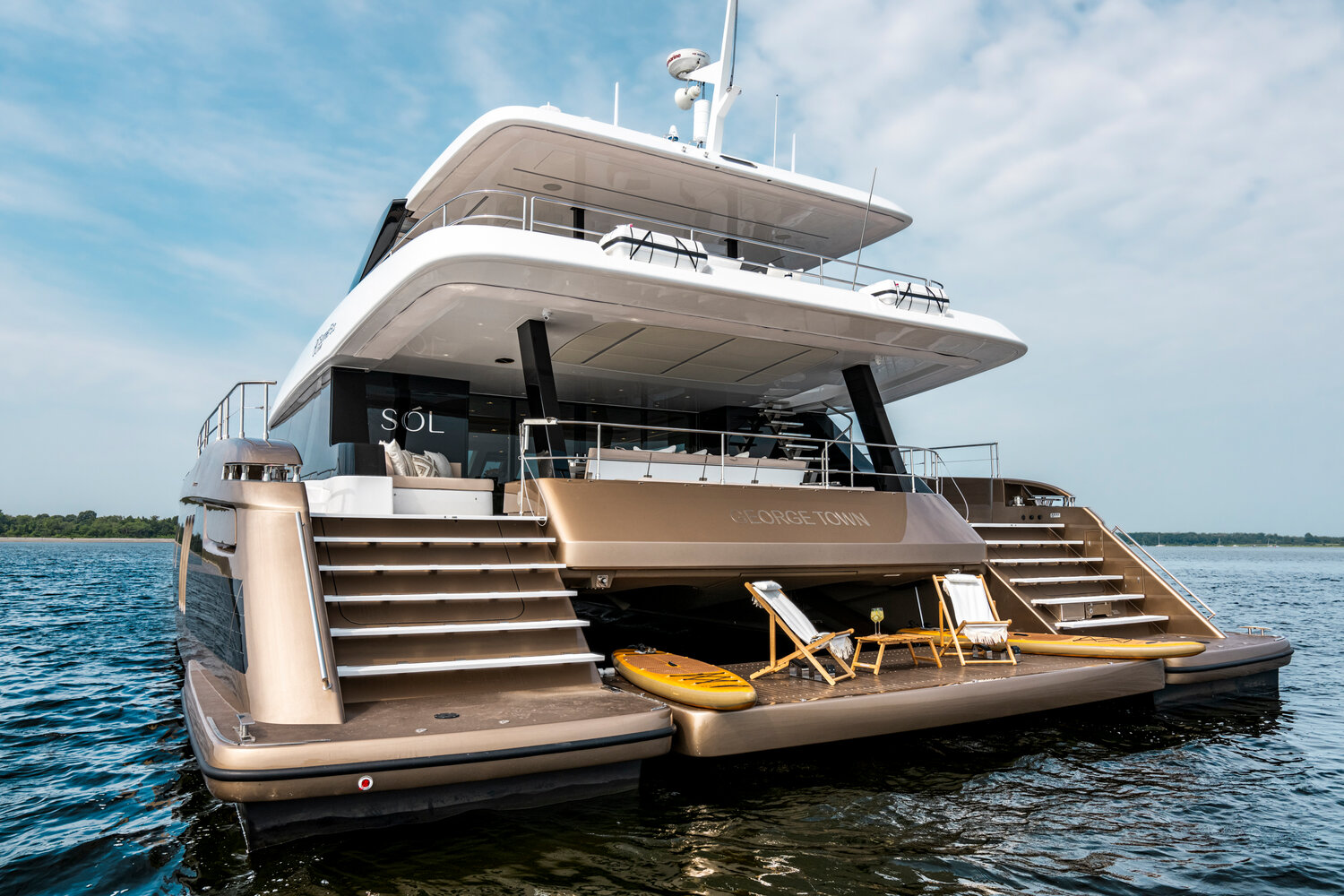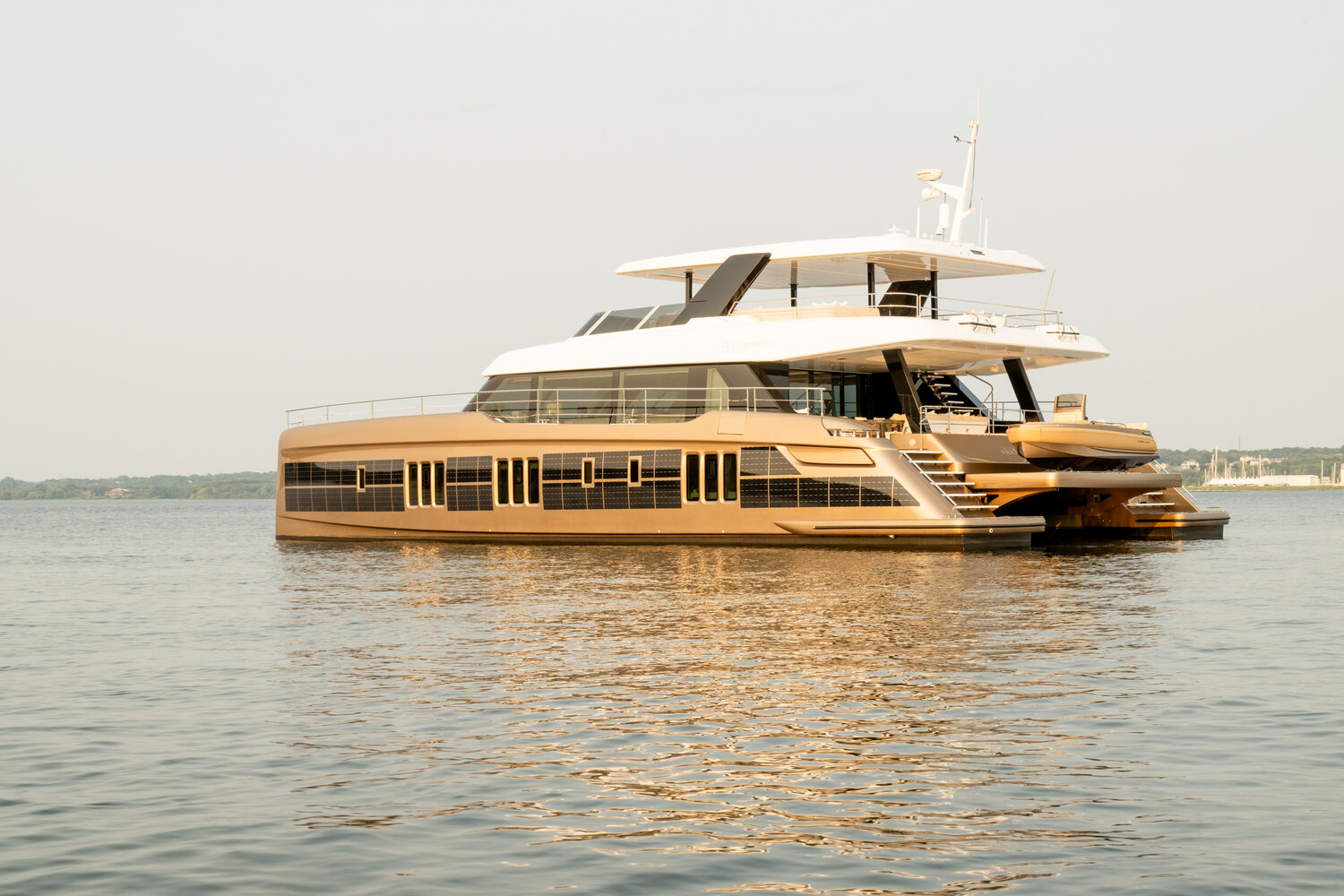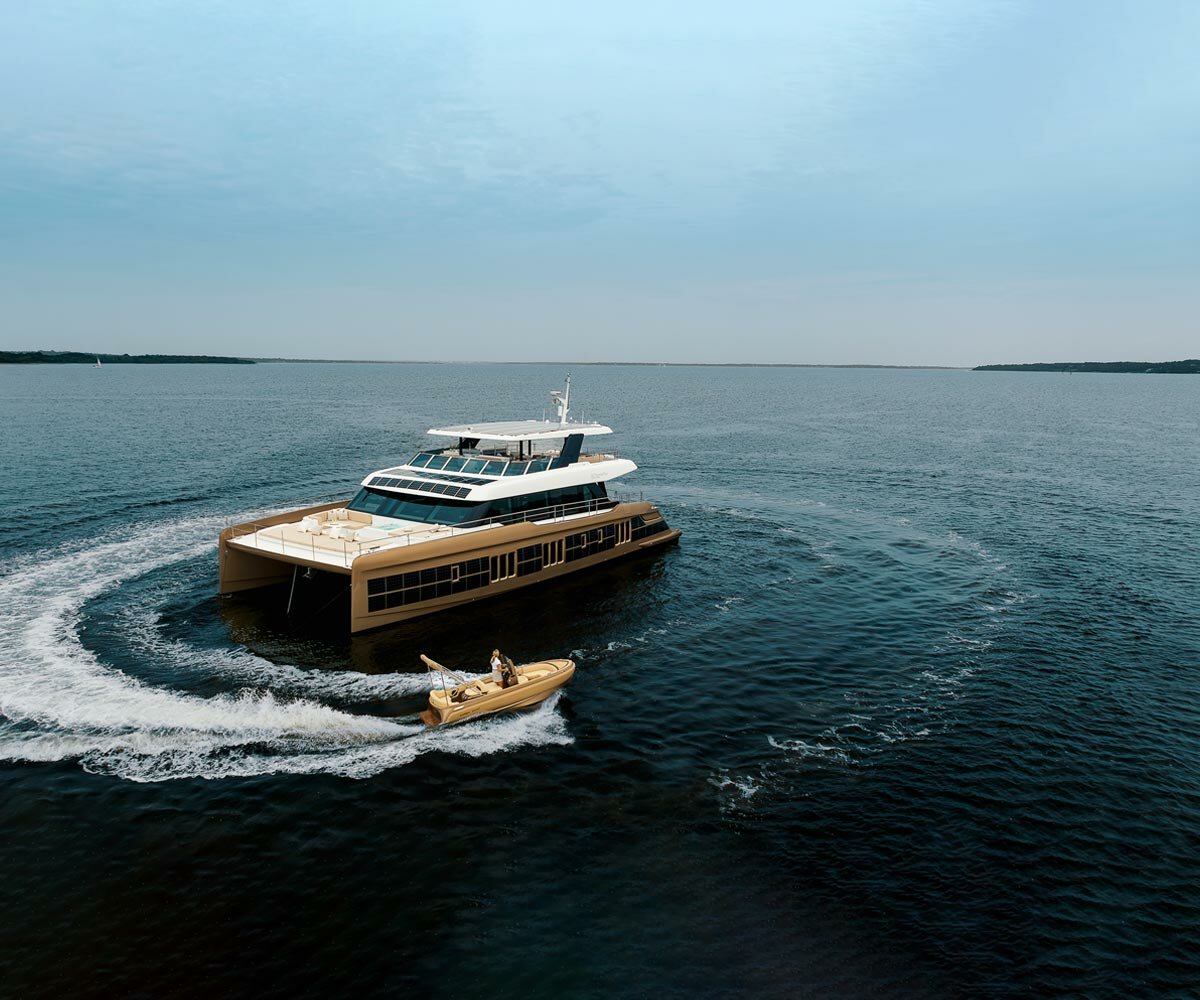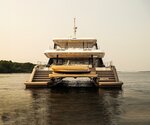- SATURDAY, MAY 11, 2024
A golden Sól, with a heart of green
Luxury yacht is all-electric, locally owned, environmental friendly and eye-catching anywhere it goes
The famed Herreshoff piers at the mouth of Bristol Harbor have hosted some of the world’s most spectacular and unique yachts. They’ve never seen anything like the gleaming, gold catamaran …
This item is available in full to subscribers.
Please log in to continue |
Register to post eventsIf you'd like to post an event to our calendar, you can create a free account by clicking here. Note that free accounts do not have access to our subscriber-only content. |
Day pass subscribers
Are you a day pass subscriber who needs to log in? Click here to continue.
A golden Sól, with a heart of green
Luxury yacht is all-electric, locally owned, environmental friendly and eye-catching anywhere it goes
The famed Herreshoff piers at the mouth of Bristol Harbor have hosted some of the world’s most spectacular and unique yachts. They’ve never seen anything like the gleaming, gold catamaran that has been tied up there for weeks.
Sól is an 80-foot electric motor yacht, the first of its kind ever to hit the water. Billed as the “world’s most advanced electric motor yacht,” the 80 Sunreef Power Eco is built by a Polish company that is launching a new line of these “Super Cats.”
It is tied up in Bristol because the owners are a local family, East Bay residents who requested anonymity before welcoming a reporter aboard for a tour.
The boat is spectacular, and that was before it was outfitted with final furnishings. It arrived here via freighter after a trip that took about a month and included several stops in Europe, to unload other yachts, before its launching in Newport in late July.
While tied to the dock outside the Herreshoff Marine Museum, it is being outfitted with furniture, artwork, AV wiring, teak flooring and more. The owners have been taking it on a few short trips around this area, but its first long voyage will be coming up later this month. After a sail to New York City for a short stay, it will head south for the Fort Lauderdale International Boat Show, one of the largest boat shows in the world. Sól is expected to be one of the featured boats in a show that typically has more than 1,200 on display. After that, it will sail to the Caribbean to begin its first season of charters.
For many yacht owners, their boat is like a second home. They use it frequently, but they also rent it out. This is the case with Sól, which will be sailed by the family during the summer months, but will be open for charters from November through April. Based in Tortola, it will hop around the Caribbean, with captain, crew and personal chef, for $100,000 per week.
The yacht has four staterooms, each with its own bathroom and shower, to sleep eight people. There are three additional crew staterooms and a galley down below.
The staterooms are richly detailed and large enough to be comfortable, but the spaces above are where the yacht hits its stride. Because it is a catamaran, the boat is wide, and the decks are wide, too. The areas for living, eating, sunbathing and relaxing seem enormous for a boat that size — large enough to host a very large family or a lot of guests easily.
Powered by the sun
The multihull vessel is equipped with two, 360-kilowatt electric motors and a 990-kilowatt battery pack. Though the hull is poured from a mold, the owners had a long list of custom choices to make, and they made many with green energy and efficiency in mind. They chose the largest battery possible, and they encased the hull in 1,600 square feet of solar panels that can generate up to 21kWP of energy.
“These are very high quality solar cells that the shipbuilder buys, and then they fabricate them into sheets that get inlaid into the decking material. So these are totally flush,” the owner said while running his hand over the hull. “It’s a smooth surface.”
The solar panels feed into the battery pack, which can also be fueled through a traditional plug-in charge. The panels can’t produce enough green energy to power the engine and all the mechanicals while it is at sail, but depending on time of year and sun conditions, they should be able to keep the “hotel” running while tied to the dock. That alone is a huge savings in both electricity costs and environmental impact.
Even when they’re idle, many of the large yachts are consuming enormous amounts of power on things other than propulsion: air conditioning, water heaters, galley appliances, running lights. They call it “house power,” and in some places there aren’t enough power lines to connect all the yachts, so many of them run their diesel generators constantly, day and night. Cruise past the super-yachts idling around Newport Harbor, and it’s easy to smell the diesel fumes as they bob on the water.
“On this boat, if you’re sitting at the dock for a few days, which is very typical, the solar panels charge up the battery,” the owner said.
Sól has a diesel generator that can also be used to power up the battery, but it is not connected to the engines. When the boat does pull into port and needs a charge, it has multiple adaptors for whatever connection is available, and it has two supply lines to speed up the charging process, if necessary.
Quiet at sail
The owner said they’ve had one very pleasant discovery in their short trips aboard the yacht. Because the engine is powered by electricity, it creates a very different experience than a traditional, diesel-powered boat.
“This boat is quiet. It’s really amazing. By comparison, in all the power boats I’ve been on, you cannot sit on the aft deck of the boat when it’s running, because of the noise and the fumes. All that diesel smoke becomes like a cloud. On this boat, everybody loves sitting in the back when it’s running. You get to see the wake, and the only thing you hear is the churning of the water. It’s like a sailboat,” he said.
Sól will typically cruise at 8 knots, but it can do 13 knots at top speed — it just chews through more energy to go faster. At the more moderate speeds, the boat should have a range of 80 to 100 miles before needing to stop and refuel.
So far the boat has met all the owner’s expectations. He was a very involved buyer — at one point spending two days in a conference room with the owner of Sunreef and digging into the science of the boat and its systems — and he scrutinized and tested everything along the way. He said it is performing as expected.
A green philosophy
The local family that purchased Sól have never owned anything like this before, but the yacht fits with their ethos on life.
“We are impact investors who are focused on climate change, and we do a number of things around that theme, like philanthropy and investing in different sectors. Power is one of them, food is another — things that create a lot of emissions … And this boat fits that philosophy. I mean, of course we’re doing this because we wanted to have a nice boat and use it, but we also really, really want this boat to be noticed and to make a difference in this industry, to accelerate it,” the owner said.
It fits their theory of change, which often happens from the ground up. “Shipbuilders are really busy doing what they do. They don’t really want to change, and in many cases it’s hard for them. They have to make big investments. They have to retrain their people. They have to redo their engineering. But when the clients want this, when the clients look for it, demand it, then the shipbuilders start taking notice. Then the competition starts heating up. There will be leaders in this space, and there will be laggards.”
He added, “Look at how many people drive electric cars in the world already. It’s in the millions. There are three or four million electric cars on the road. How many of those drivers are into boating? Quite a few. So if they like electric cars, they’re probably going to be interested in, maybe very interested in, the electrification of boats.”
More green choices
The boat’s design choices went beyond just style and fashion. There were many philosophical choices along the way. The boat’s HVAC system is a state-of-the-art, high efficiency system that consumes less energy than most systems. The same is true of the water-makers. The family also installed a composting system onboard — “we don’t want to dump our food waste in the water,” the owner said.
They also took a non-traditional approach with finishing the hull. Standard yachts or boats of any size are painted in anti-fouling paints, which are highly toxic and must be cleaned frequently. The cleaning products themselves are highly toxic, and 100 percent of those end up in the water. So typical maintenance of a large boat can be very costly, and very unfriendly to the marine environment.
Sól’s hull is treated with a silicon coating that needs far less maintenance. It’s a technology that is becoming more typical on commercial vessels, the large freighters that haul cargo around the globe. Large shipping companies are starting to outfit their fleets with silicone-treated hulls because they can stay in the water longer, without the downtime and the cost of hauling, cleaning and re-painting.
The owners are already booking charters for Sól, and its crew are getting ready for their first guests. Though there’s a cost involved in staffing a crew year-round, the benefits far outweigh the investment. Aside from the revenue that will offset the cost of the boat itself, they expect the yacht to stay in top shape, whether they are personally there to oversee it or not.
Said the owner: “A chartered boat is typically better maintained because that crew is always on it. They’re always cleaning it. They’re always refreshing it, because it’s got to look good for the next charter, so it meets customer expectations. If it’s not chartered, and the owners show up every three months, do you think they’re polishing the boat every day?”
Sól has it own website, which highlights its wellness programs, food options (including a vegan menu), charter destinations and more. Find it at: solyachtcharter.com.
Other items that may interest you

















